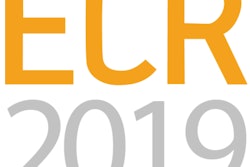
Wasted time represents a third of the total MRI exam process cycle -- and it can also extend a patient's length of stay in the hospital, according to research published in the October issue of the American Journal of Roentgenology.
In a study intended to analyze MRI workflow logistics, a team led by senior author Dr. Koenraad Mortele of Beth Israel Deaconess Medical Center in Boston found that 25% of total MRI exam process time and 29% of total patient length-of-stay time was "nonvalue-added" -- that is, time wasted.
The reasons for this wasted time can vary, so it's worth tracking MRI workflow to determine what exactly is causing delays in your practice, corresponding author Dr. Kevin Beker told AuntMinnie.com.
"We knew that our scanners weren't being used as efficiently as they could," he said. "But what exactly was causing this wasted time -- like IV placement problems and issues with interpreters -- did surprise us."
Going lean
 Dr. Kevin Beker from Beth Israel Deaconess Medical Center.
Dr. Kevin Beker from Beth Israel Deaconess Medical Center.Beth Israel's radiology department performs about 3,000 MRI exams per month over a range of specialty protocols, according to the researchers. Over the past five years, the department has seen dramatic growth in MRI exam volume, and it has been a challenge to handle this higher workload on its existing seven scanners. At the request of the department, Mortele's group used Toyota's lean manufacturing approach to analyze MRI workflow and patient wait times (AJR, October 2017, Vol. 209:4, pp. 836-844).
"Our MRI leadership perceived multiple inefficiencies in the current patient throughput and requested a process improvement analysis," the authors wrote. "A team was formed that involved the MRI clinical director, the MRI division manager, and two research fellows."
Mortele and colleagues collected workflow data from 305 MRI exams conducted on two of the department's outpatient MRI scanners for two weeks, measuring two separate time cycles: the actual MRI process cycle and the total patient stay (defined as time between the patient's arrival and discharge). The researchers tracked the following measures:
- Value-added time: time the patient was in the scanning room
- Business value-added time: time the patient spent being prepared for the exam, providing consent
- Nonvalue-added time: wasted time, such as waiting for a room
Of the 305 exams, 34.1% were body scans, 28.9% were neurologic, 21% were musculoskeletal, and 16.1% were breast exams. The overall MRI process cycle lasted a mean of 50 minutes per exam. Overall mean patient length of stay was 83 minutes.
| Analysis of time spent in MRI exam process cycle | ||
| Mean total MRI exam process cycle in minutes | Mean total patient stay in minutes | |
| Value-added time | 28 (56.4%) | 31 (38%) |
| Business value-added time | 9 (18%) | 26 (32%) |
| Wasted time | 13 (26%) | 24 (29%) |
Mortele and colleagues found that the most frequent inefficiency was IV or port placement. They determined that a delay occurred when the patient was scheduled for an exam that required contrast, but the MRI technologist wasn't able to place the IV line or access the port. This resulted in the summoning of a specialized nurse to the preparation room for correct placement of the IV or port. The researchers determined that IV or port placements had a mean delay of 22 minutes.
The delay with the biggest effect on time was MRI arthrography exams that required contrast injection into a joint that was not accounted for in the schedule (mean delay, 42 minutes). Waiting for an interpreter caused a mean delay of 36 minutes and had the second highest effect on total patient stay; patient needs such as additional questions about the exam, issues with paperwork, and claustrophobia caused a mean delay of 11 minutes, the researchers found.
Decreasing delays
How can these delays be addressed? Mortele's team plans to establish a competency training course to boost the IV placement skills of all technologists and to identify the most capable staff members and make sure each shift has at least one technologist who is highly skilled in this area.
The department has also begun an initiative that will offer continuing education regarding exam scheduling and institute a patient scheduling review three days in advance of the appointment to identify any potential problems (e.g., necessary protocols, incorrect scanner bookings, or patients with claustrophobia). The initiative will also establish a process in which MRI scanning managers can check in with interpreters to set exact arrival time and interaction time with patients.
In any case, you can't fix it if you don't track it, the group concluded.
"Dissecting [MRI workflow] components can give tremendous insight into possible inefficiencies, which may be imperceptible to the regular staff during the process, and can pinpoint issues, such as where delays and clusters can alter the process," the researchers wrote. "Identifying specific delays may expedite the application of targeted improvement strategies, potentially increasing revenue, efficiency, and overall patient satisfaction."





















